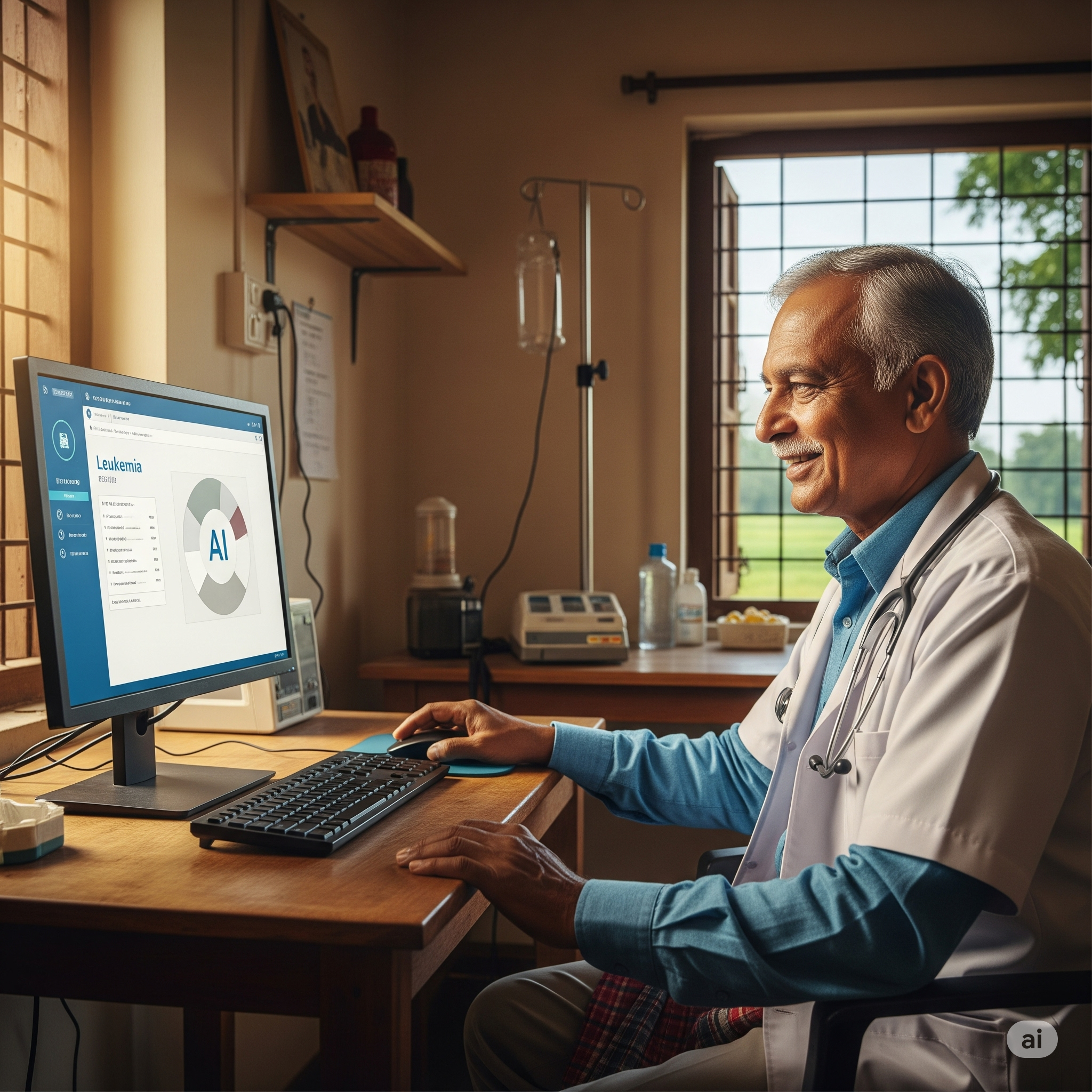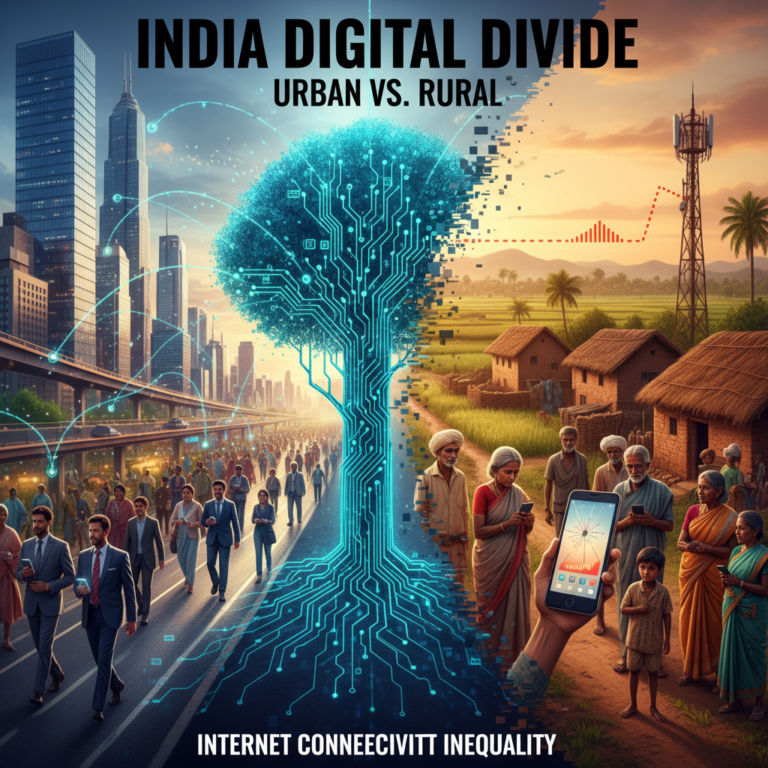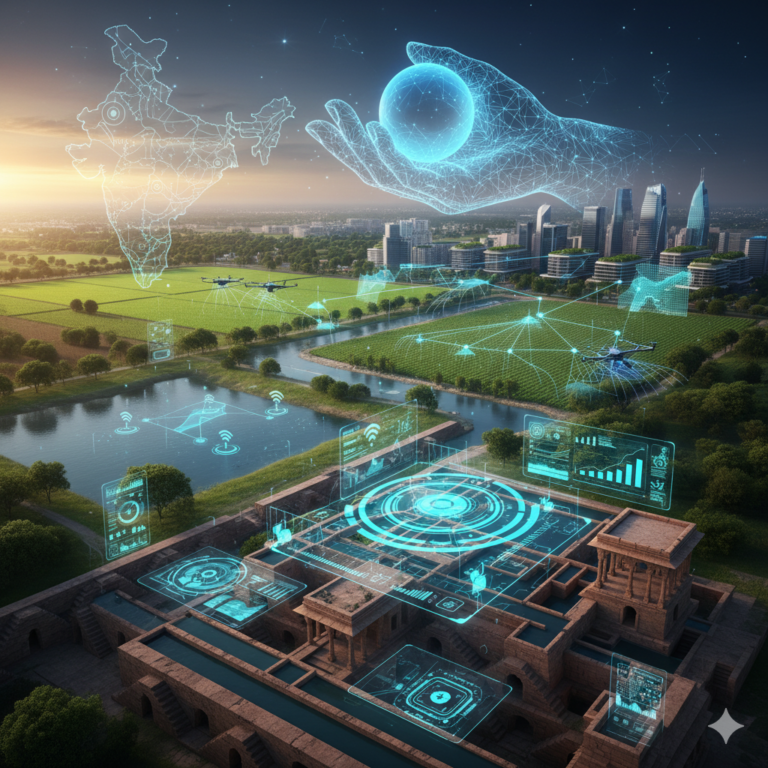Key Takeaways:
- An AI system helped detect leukemia in a patient from Parbhani, Maharashtra, spotlighting how advanced tech is reaching rural India.
- The case demonstrates the rising role of AI in early and accurate diagnosis, especially in overlooked or resource-poor areas.
- With increasing access to digital tools, India’s rural healthcare sector is on the brink of transformation.
- This is not just a tech story, but a public health milestone and a model for future medical practices in developing nations.
The Parbhani Breakthrough
In a heartening incident from Maharashtra’s Parbhani district, artificial intelligence played a key role in detecting leukemia in a patient—a case that is now being seen as a defining moment in India’s journey toward inclusive tech-driven healthcare. While AI in medicine is nothing new in cities, its penetration into rural areas marks a major shift in healthcare equity. This incident proves that AI isn’t just the future; it’s the present, even in India’s less-talked-about corners.
In this blog, we unpack the story behind this medical breakthrough, the technology that enabled it, the impact on local healthcare, and what this means for the broader application of AI in rural India.
Understanding the Case: How AI Detected Leukemia
Leukemia, a type of cancer affecting the blood and bone marrow, is notoriously difficult to detect in its early stages. The case in Parbhani came to light when a patient showed vague symptoms that typically wouldn’t immediately raise red flags. However, an AI-assisted diagnostic tool flagged abnormalities in the patient’s blood work that led to further investigation and eventually, a confirmed diagnosis.
The AI system, reportedly linked to a regional diagnostic center through cloud-based tools, scanned thousands of parameters in blood samples and cross-referenced them with a global database. Within minutes, the tool suggested a high probability of leukemia, prompting human doctors to conduct a biopsy and initiate immediate treatment.
Why This Matters: Bridging the Rural-Urban Healthcare Gap
Traditionally, patients in remote areas like Parbhani face delays in diagnosis due to:
- Lack of specialist doctors
- Poor diagnostic infrastructure
- Transportation challenges to urban hospitals
- Low awareness and healthcare literacy
AI overcomes several of these barriers by:
- Offering fast, accurate preliminary diagnostics
- Reducing dependence on physical access to experts
- Supporting overburdened healthcare staff with intelligent recommendations
This case symbolizes how AI can fill critical gaps in areas long underserved by modern healthcare systems.
The Technology Behind the Diagnosis
The tool used in this instance likely combined several AI technologies:
a. Machine Learning Algorithms: Trained on massive datasets of patient history, blood images, and confirmed cancer cases, these algorithms can detect minute abnormalities invisible to the human eye.
b. Image Recognition: AI systems use computer vision to analyze blood smear images and flag unusual white blood cell activity.
c. Natural Language Processing (NLP): Used for parsing and correlating patient records and symptom narratives across various formats.
d. Cloud Integration: The diagnostic system was likely cloud-connected, enabling real-time updates, collaborative diagnosis, and database comparison across regions.
AI in Rural India: Growing Adoption and Case Studies
This isn’t the first time AI has stepped in to save lives in rural India. Other notable examples include:
- Google and Aravind Eye Hospital Partnership: Screening for diabetic retinopathy using AI in Tamil Nadu.
- Wadhwani AI in Maharashtra: Helping detect malnutrition in infants using smartphone cameras.
- Niramai: Using thermal imaging and AI for breast cancer detection in smaller towns.
These initiatives highlight how cost-effective, scalable AI solutions are already making a difference outside major cities.
Limitations and Ethical Concerns
Despite its promise, AI-based diagnostics also come with challenges:
- Data Privacy: Medical data handling in rural setups often lacks robust security frameworks.
- Algorithmic Bias: AI systems trained on urban or Western datasets may misinterpret rural-specific health trends.
- Over-reliance: There’s a risk of over-relying on machines in the absence of trained doctors.
Hence, while AI is a powerful support tool, human oversight remains essential.
The Road Ahead: Building Smarter Rural Healthcare Systems
To replicate the success seen in Parbhani:
- Public-Private Partnerships must fund and deploy AI-enabled diagnostic centers.
- Training Healthcare Workers to use AI tools effectively.
- Telemedicine and Mobile Health Vans should be AI-integrated for real-time diagnosis.
- Awareness Campaigns to educate patients about early detection and trust in AI.
With government initiatives like the Ayushman Bharat Digital Mission (ABDM), India has a robust foundation to scale AI-driven care.
Conclusion: A New Era for Healthcare Equity
The Parbhani leukemia diagnosis through AI isn’t just a local win—it’s a national signal. It shows that when the right technology meets the right intent, even the most underserved regions can witness transformative outcomes. For a country with vast geographical and economic disparities in healthcare access, this incident is a case study in what is possible.
Artificial Intelligence isn’t replacing doctors—it’s empowering them. And in places like Parbhani, it could very well be the difference between life and death.









+ There are no comments
Add yours